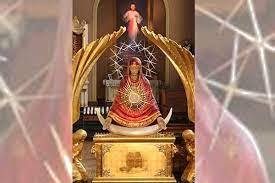Eps 15: The Virgin Mary as the Ark of the Covenant
— The Moments About the Virgin Mary in the Role as the Mother of God
In the 10-minute podcast titled "The Virgin Mary as the Ark of the Covenant," the speaker discusses the symbolic connection between the Virgin Mary and the Ark of the Covenant in Christian theology. The Ark of the Covenant is a sacred object mentioned in the Hebrew Bible that housed the stone tablets with the Ten Commandments and represented the presence of God among the Israelites. The speaker explains that Mary, as the mother of Jesus, is often referred to as the "Ark of the New Covenant." This comparison stems from the belief that just as the Ark contained the Word of God in the form of the tablets, Mary carried within her womb the Word of God made flesh, Jesus Christ. Mary is seen as a vessel for God's presence and a bearer of divine life. The podcast discusses various parallels between Mary and the Ark of the Covenant. For instance, just as the Ark was made of pure gold, Mary is considered to be immaculately conceived, free from sin, and filled with grace. Similarly, while the Ark contained the manna, a heavenly bread, Mary carried the true Bread of Life, Jesus, who offers eternal nourishment to humanity. Furthermore, the speaker highlights the significance of Mary's visit to her cousin Elizabeth, drawing a connection to the Ark's journey to the house of Obed-Edom in the Old Testament. Mary's visit is seen as bringing blessings and joy to Elizabeth's household, mirroring how the presence of the Ark brought blessings to Obed-Edom's home. In conclusion, the podcast emphasizes the theological link between the Virgin Mary and the Ark of the Covenant. Mary is viewed as the New Ark, carrying within her the presence of God in the form of Jesus. This comparison highlights Mary's role in salvation history and underscores her importance in Christian faith.
| Seed data: | Link 1 |
|---|---|
| Host image: | StyleGAN neural net |
| Content creation: | GPT-3.5, |
Host

Ruby Ferguson
Podcast Content
In the Christian tradition, the Virgin Mary holds a position of great honor and reverence. She is seen as the mother of Jesus Christ, the son of God, and is regarded as a model of faith and purity for believers. But there is also a deeper symbolism that is often associated with Mary – that of the Ark of the Covenant.
The Ark of the Covenant was a sacred container in the Old Testament that housed the stone tablets inscribed with the Ten Commandments. It was considered the holiest of all Israelite possessions and was believed to be the dwelling place of God. The Ark was constructed with specific measurements and materials, and was adorned with cherubim, which represented the presence and glory of God.
Similarly, the Virgin Mary is seen as the vessel through which God chose to enter the world. In the Gospel of Luke, the angel Gabriel visits Mary and tells her that she has been chosen to bear a son, who will be called the Son of the Most High. Mary humbly accepts this divine task, stating, "Behold, I am the handmaid of the Lord; let it be to me according to your word."
Mary's consent to God's plan is often referred to as her "fiat," a Latin term meaning "let it be done." This echoes the words of the Israelites when they brought the Ark of the Covenant into the Temple - "Let us bring the ark of the Lord, that he may come to us and save us." In both instances, there is a recognition of the sacredness of the vessel and a willingness to submit to God's will.
Just as the Ark of the Covenant held the tablets of the Law, the Virgin Mary held within her the Word made flesh – Jesus Christ. Mary's womb became the dwelling place of God himself, just as the Ark was believed to be the dwelling place of God's presence. The comparison draws attention to the reverence and devotion that is due to both Mary and the Ark.
Symbolically, the Ark of the Covenant also prefigures Mary's role as the New Eve. The first Eve, in the Book of Genesis, played a pivotal role in the fall of humanity from grace. Mary, on the other hand, is often referred to as the New Eve, who through her obedience, humility, and faith, participates in the redemption of humanity.
As the Ark of the Covenant was constructed with pure and precious materials, so too is Mary believed to be immaculately conceived without original sin. This unique privilege prepares her to receive the Son of God within her, aligning her with the sacredness of the Ark. This understanding of Mary's sinlessness is a central tenet of the Catholic Church's teaching on the Immaculate Conception.
Furthermore, just as the Ark of the Covenant was carried by the Israelites on their journey through the wilderness, Mary is seen as accompanying and guiding the Church on its pilgrimage through history. She is regarded as the Mother of the Church and the spiritual mother of all believers, just as the Ark was a sign of God's presence and protection for the Israelites.
The parallels between Mary and the Ark of the Covenant extend beyond symbolism to the realm of theology and doctrine. Just as the Israelites would consult the Ark for guidance, Catholics and other Christian traditions hold Mary in high esteem and seek her intercession. She is seen as a powerful advocate, who can intercede on behalf of believers and bring their prayers to her Son.
It is important to note that the comparison of Mary to the Ark of the Covenant does not diminish her uniqueness or overshadow her role as the mother of Jesus. Rather, it enhances our understanding of her significance and highlights the depth of her connection to God's plan for salvation.
In conclusion, the Virgin Mary as the Ark of the Covenant is a rich and profound theological motif. It highlights the sacredness, reverence, and unique role that Mary played in God's plan for humanity. And more importantly, it invites believers to reflect on the ultimate purpose of Mary's life – to bring Christ into the world and to guide us on our own pilgrimage of faith.
